The exact location of the Tomb of Jesus is still some mystery. I mean, the earliest reference to the burial of Jesus is in a letter from Paul. There, he’s writing to the Corinthians around the year 54 CE; he refers to the account he had received of the death and resurrection of Jesus. Furthermore, all four canonical gospels were written between 66 and 95 CE. All four conclude with an extended narrative of Jesus’ arrest. Following his trial and Crucifixion.
The Tomb of Joseph of Arimathea
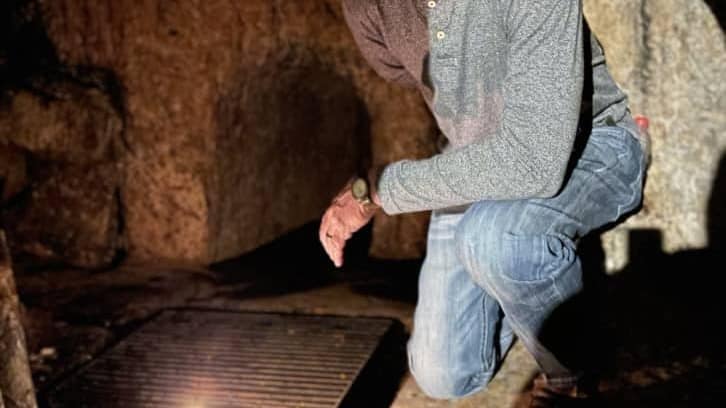
Then, the burial of his body and, ultimately, the Resurrection of Jesus. In other words, the more Gospels mention the same event, the more probable it occurred. Moreover, The New Testament states that, on the evening of the Crucifixion, Joseph of Arimathea asked Pilate for Jesus’ body. After Pilate granted his request, he wrapped it in a linen cloth and laid it in a tomb.
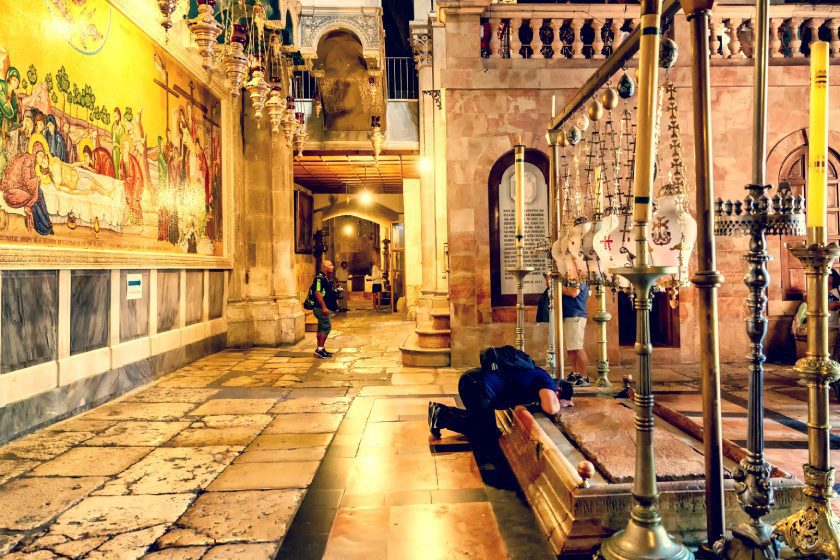
The Tomb of Jesus
So, where Jesus was buried? The canonical Gospels testify to the place outside Jerusalem named Skull Hill where Jesus was crucified. Its traditional site, identified by Queen Mother Helena, mother of Constantine the Great, in 325, is at the Church of the Holy Sepulchre site. However, there is no consensus as to the location of the site. John 19 describes the crucifixion site as being “near the city.” According to Hebrews, it was “outside the city gate”.
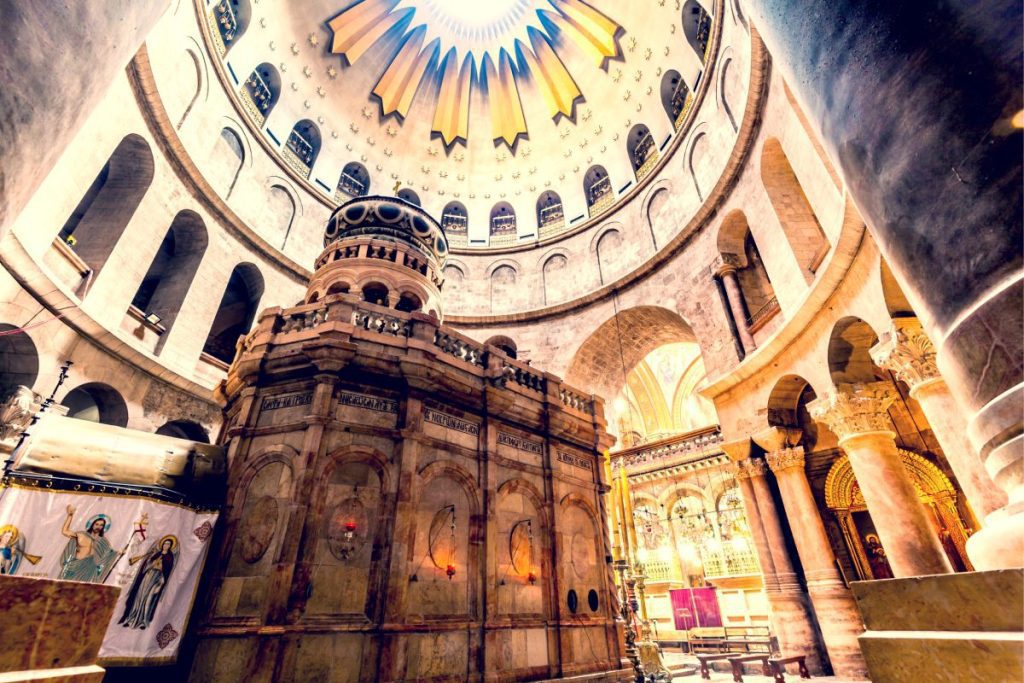
On the other hand, Matthew 27 and Mark 15 note that the location would have been accessible to “passers-by.” Thus, locating the crucifixion site involves identifying a site that, in the city of Jerusalem some four decades before its destruction in CE 70, would have been outside a major gate near enough to the city that the passers-by could not only see him but also read the inscription ‘Jesus the Nazarene’, the King of the Jews.
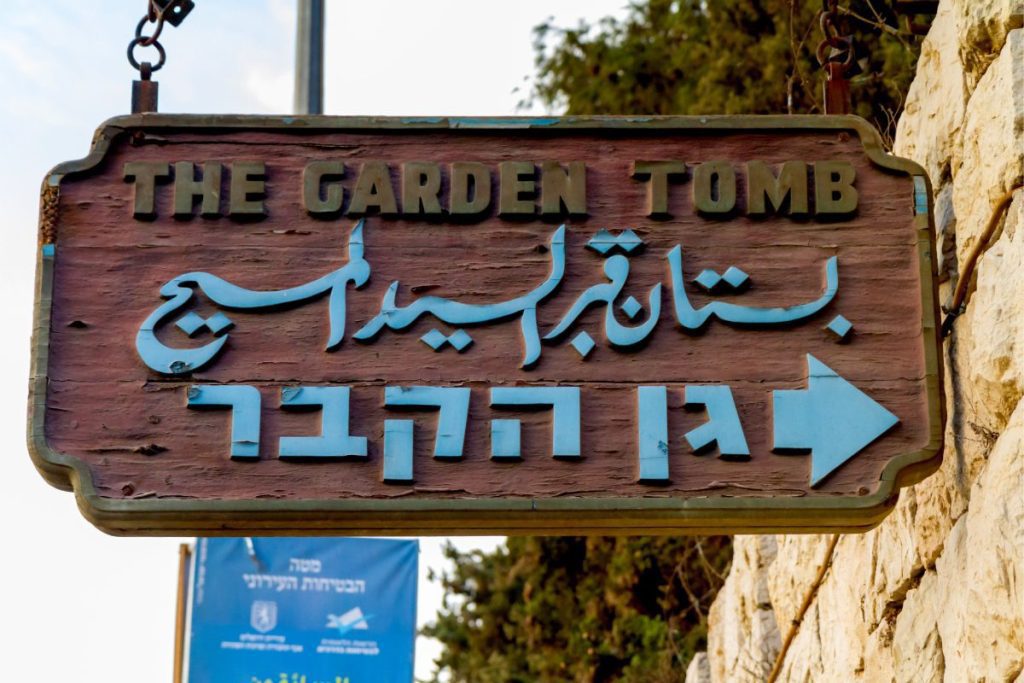
Church of the Holy Sepulcher
Since the fourth century, Christian tradition has favored a location within the Church of the Holy Sepulchre. This places it well within today’s Jerusalem walls, which surround the Old City and was rebuilt in the 16th century by the Ottoman Empire. Proponents of the traditional Holy Sepulchre location point out that first-century Jerusalem had a different shape and size from the 16th-century city, leaving the church’s site outside the pre-CE 70 city walls. Those opposing it doubt this.
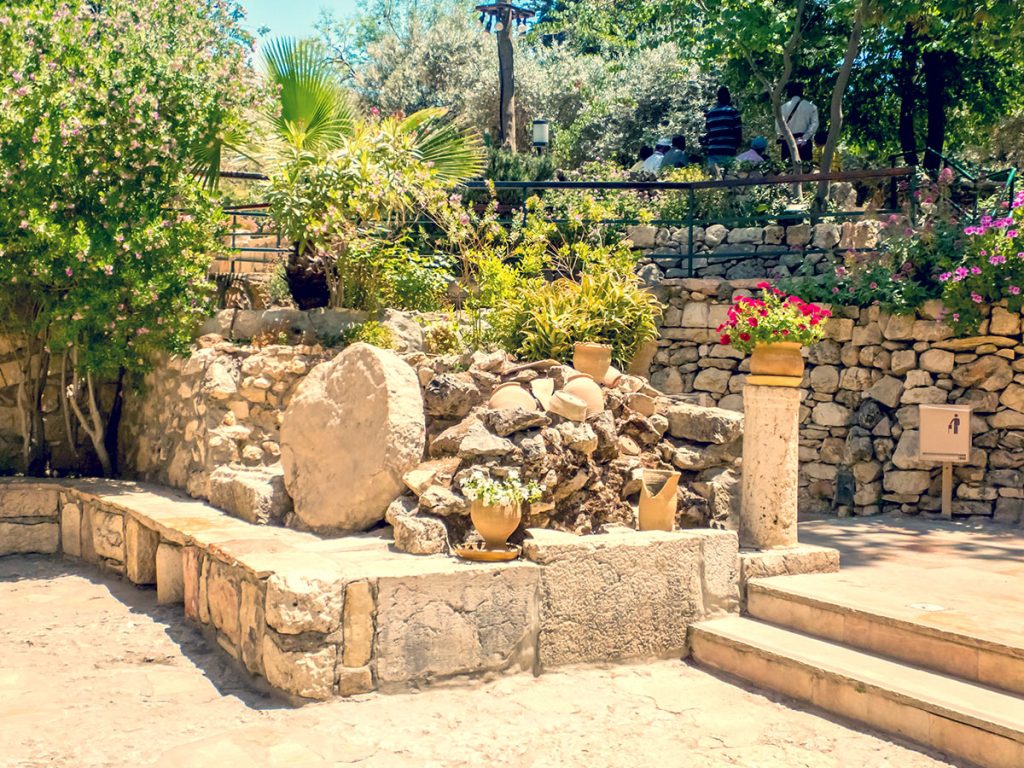
Defenders of the traditional site have argued that the site of the Church of the Holy Sepulchre was only brought within the city limits by Herod Agrippa (41–44), who built the so-called Third Wall around a newly-settled northern district, while at the time of Jesus’ crucifixion around CE 30 it would still have been just outside the city.
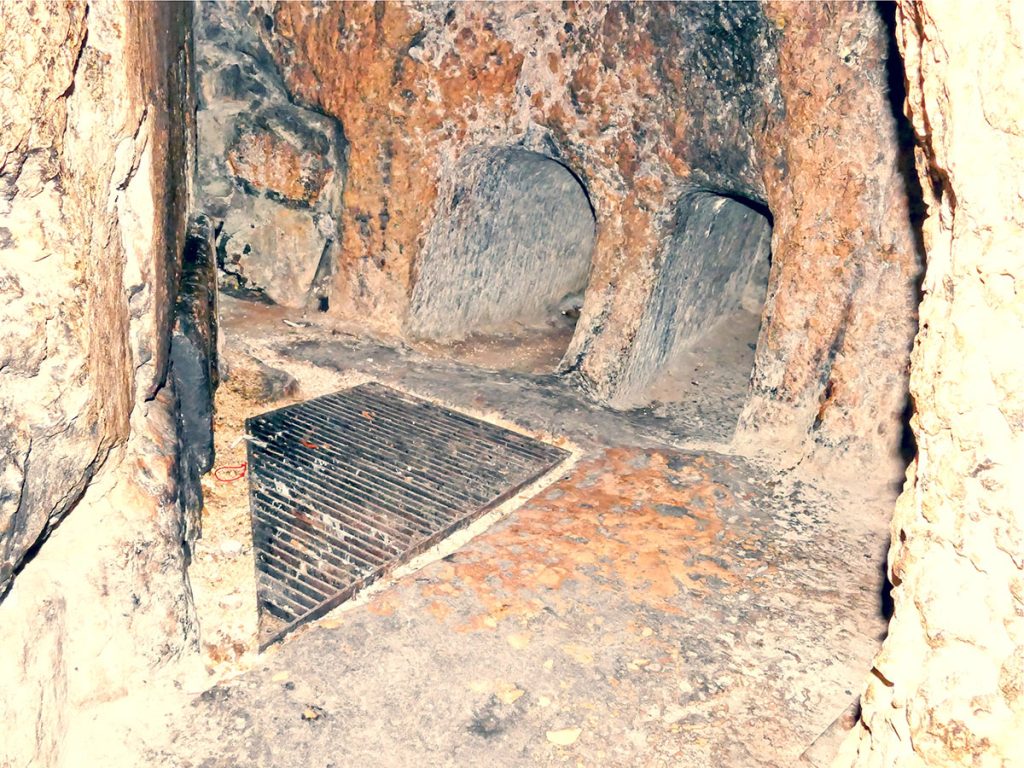
One Tomb, Mulitple Theroies!
Henry Chadwick (2003) argued that when Hadrian’s builders replanned the old city, they “incidentally confirm[ed] the bringing of Golgotha inside a new town wall.” In 2007 Dan Bahat, the former City Archaeologist of Jerusalem and Professor of Land of Israel Studies at Bar-Ilan University, stated, “Six graves from the first century were found in the area of the Church of the Holy Sepulchre. That means this place [was] outside of the city, without any doubt…”; thus maintaining that there are no scientific, archaeological grounds for rejecting the traditional location for Calvary.
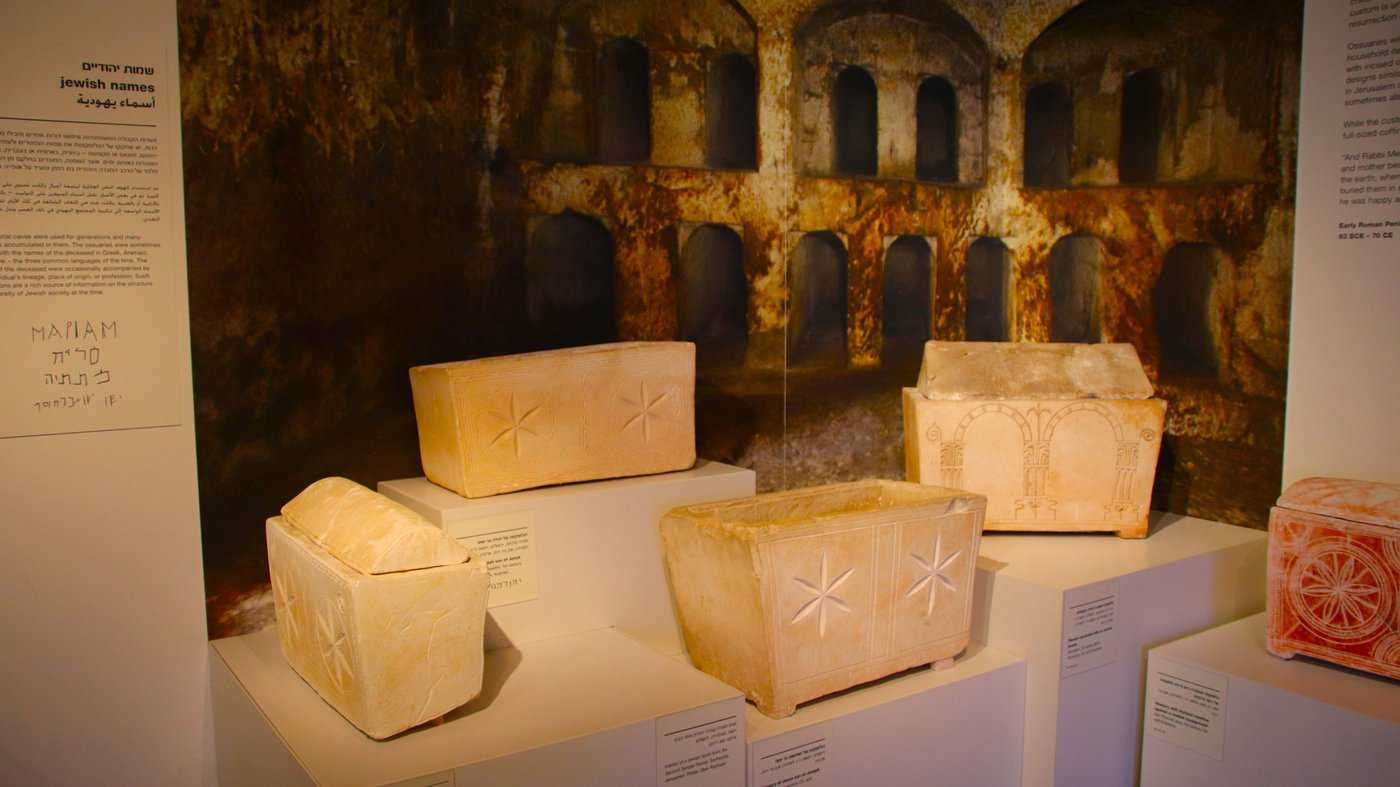
First Records of the Tomb of Jesus in Historical Sources
The traditional location of Golgotha derives from its identification by Queen Mother Helena, mother of Constantine the Great, in 325. Only a few steps away, Helena also identified the location of the tomb of Jesus and claimed to have discovered the True Cross; her son, Constantine, then built the Church of the Holy Sepulchre around the whole site. In 333, the author of the Itinerarium Burdigalense, entering from the east, described the result:
“On the left hand is the little hill of Golgotha where the Lord was crucified. About a stone’s throw from thence is a vault [crypta] wherein his body was laid; and rose again on the third day. There, at present, by the command of the Emperor Constantine; has been built a basilica; that is to say, a church of wondrous beauty.”
Itinerarium Burdigalense
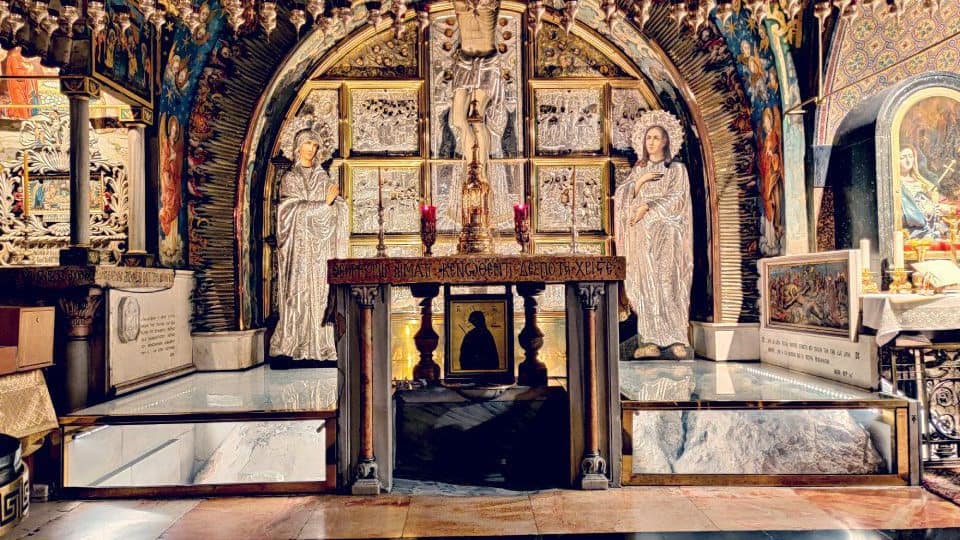
More Archaeological Evidence Point to the Tomb of Jesus at the Church of the Holy Sepulcher. Prior to Helena’s identification, the site had been a temple to Aphrodite. Constantine’s construction took over most of the site of the earlier temple enclosure. Christian tradition claims that the location had initially been a Christian place of veneration; but that Hadrian had deliberately buried these Christian sites and built his own temple on top, on account of his alleged hatred for Christianity (Eusebius, ‘Life of Constantine’).
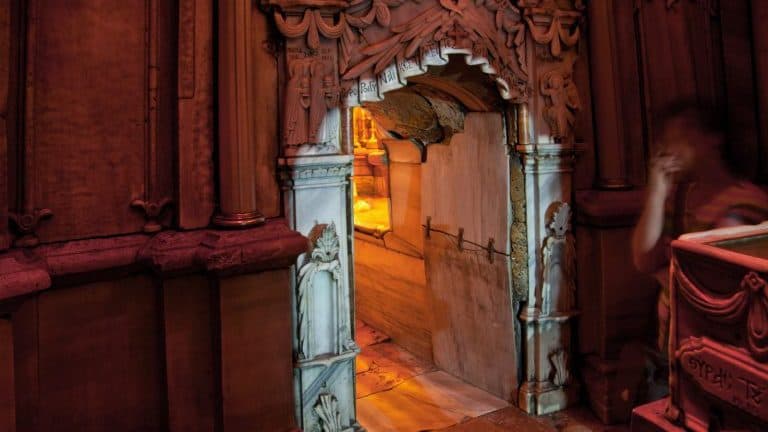
There is certainly evidence that circa 160, at least as early as 30 years after Hadrian’s temple had been built, Christians associated it with the site of Golgotha; Melito of Sardis, an influential mid-2nd century bishop in the region, described the location as “in the middle of the street; in the middle of the city”, which matches the position of Hadrian’s temple within the mid-2nd century city.
Ancient Graffiti Found Near the Tomb of Jesus
Archaeological excavations under the Church of the Holy Sepulchre have revealed Christian pilgrims’ graffiti, dating from the period that the Temple of Aphrodite was still present, of a ship, a common early Christian symbol, and the etching “DOMINVS IVIMVS”, meaning “Lord, we went”; possible lending support to the statement by Melito of Sardis asserting that early Christians identified Golgotha as being in the middle of Hadrian’s city rather than outside.
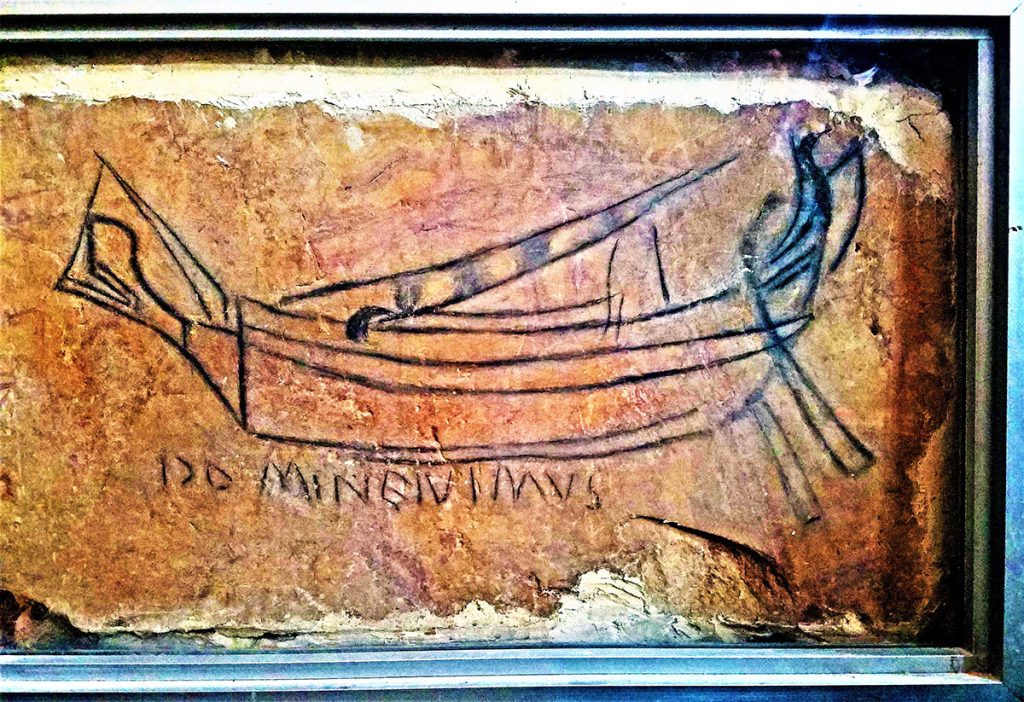
(Credit: Ranbar CC BY-SA 4.0)
Another Possible Location: the Garden Tomb
In 1842, heavily relying on the research of Edward Robinson, a German theologian and biblical scholar from Dresden named Otto Thenius was the first to publish a proposal that the rocky knoll north of Damascus Gate was the biblical Golgotha. In 1882–83, Major-General Charles George Gordon endorsed this view, and subsequently, the site has sometimes been known as Gordon’s Calvary. The location, usually referred to today as Skull Hill, is beneath a cliff that contains two large sunken holes, which Gordon regarded as resembling the eyes of a skull. He and a few others before him believed that the skull-like appearance would have caused the location to be known as Golgotha.
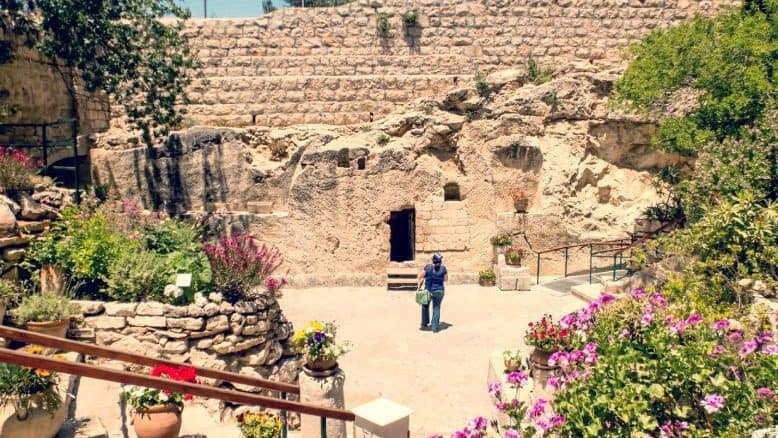
The Tomb of Jesus – The Garden Tomb
Nearby is an ancient rock-cut tomb known today as the Garden Tomb, which Gordon proposed as the tomb of Jesus. The Garden Tomb contains several ancient burial places, although the archaeologist Gabriel Barkay has proposed that the tomb dates to the 7th century BCE and that the site may have been abandoned by the 1st century.
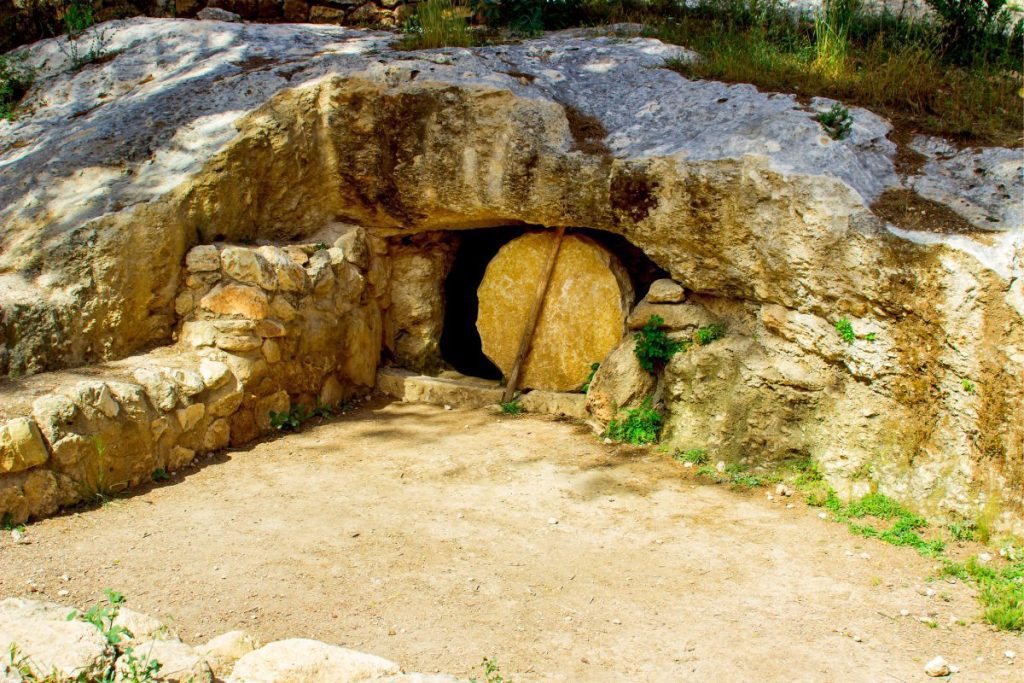
On my private Christian tours of Jerusalem, I try to take my guests to both locations. I think it does help to see both to get an idea about ancient Jewish burial practices. But it’s important to stress out that most traditions point to the Church of the Holy Tomb of Jesus in the Old City. This is also where most denominations go and worship. The Garden Tomb is a fairly new tradition and is relatively more controversial still among archaeologists. So, just in case, I will take you to both on my guided tours of Jerusalem!







